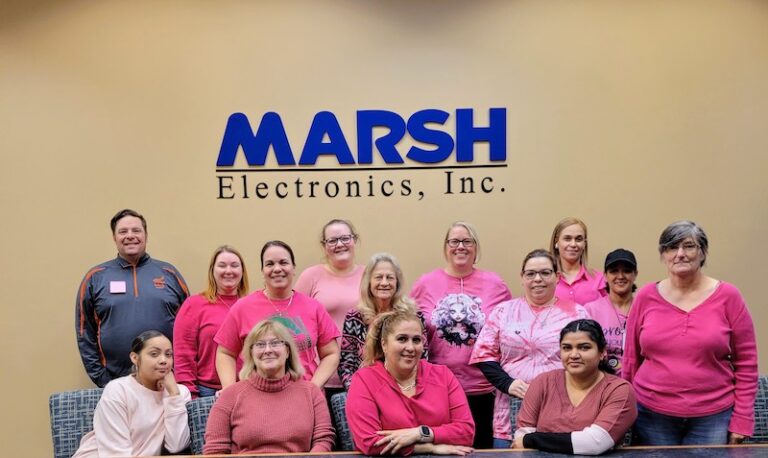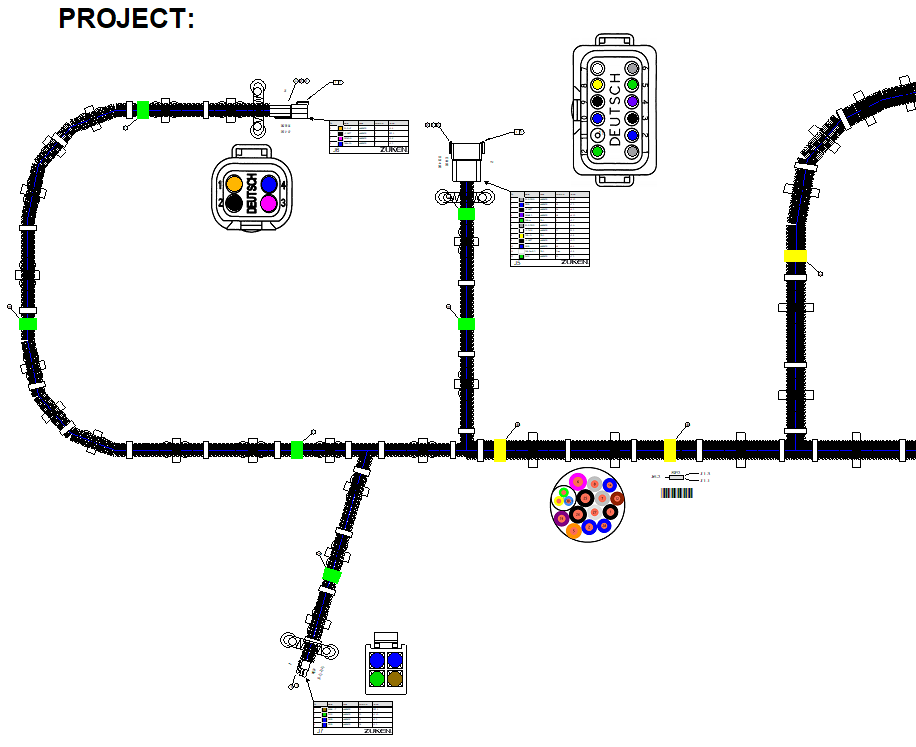Harness Builder for E³.series 2020 – Design to Quote
by Paul Harvell
With the introduction of Harness Builder for E3.series 2020, Paul Harvell, the Director for the E3.series product rage at Zuken USA, feels it is edging closer to the perfect answer to the problem of creating wire harness quotations faster, and more accurately. He stresses it has the extra bonus of entering the manufacturing stage much earlier by using the same tool for the two jobs. Specifically, He had this to say:
“It is so important to get the wire harness quotation created quickly for the potential job and have it be as accurate as possible so there is no monetary loss from a discrepancy, such as a long lead time item not being flagged, or protracted assembly time for complicated parts not being highlighted. What we have with Harness Builder for E³.series is a system that allows accurate quotations to be driven from a design database that can be reused and not reinvented for the actual manifesting formboard design.”
This will save time and maintain the accuracy of the product, he maintains. There is always a balance in the quotation process. On the one hand, you must avoid over-engineering a quote, but on the other, you must avoid doing just enough to return accurate costing and labor rates. Harness Builder for E3.series offers different levels of data input to achieve this balance.
Auto Selection and Placement of Labels
New auto placement of device and cable labels along with heat shrinks should vastly increase the tedious job of manual measurement and placement on the drawing (Figure 1).
Figure 1.
User-definable content is extracted directly from the design for printing or exported to the vital build documentation. This negates the chore of checking for compatibility and accuracy of information to the design.
Different label families can be selected and automatically sized to the harness bundle, then placed at set distances or locations defined in the interface.
The labels can be sent out directly to a variety of different printers and print software. Zuken has recently been working with Dasco to generate data directly to be used in their latest printers (Figure 2).
Figure 2.
Harness Builder for E3.series also exports to Brady, Brother, Epson and Phoenix printers and can create data that can be directly loaded into other larger machines such as the Sumitomo range of thermal printers.
Tape Auto Placement
Zuken has also added new auto placement of tape or fixings in predefined positions on nets and set distances from connector ends. This eliminates the need for manual calculations and measurements. Tape, labels and heat shrinks are automatically added to the quotation and or the bills of materials if desired (Figure 3).
Figure 3.
Design Aids
Through the years, Zuken has made it a priority to listen to their customers. In doing so, they discovered an important problem: one of the more difficult parts of designing the harness on any CAD/CAE design system, is the issue of adding predefined lengths of cables that might wind around a pin or peg and are not at just straight paths.
In response to this, the new 2020 version of Harness Builder for E3.series includes a new co-pilot tool. This allows the user to enter in a predefined length, and then freely draw that length around curves or along straight paths on the formboard sheet in order to maintain the length (Figure 4).
Figure 4.
Testing Times
This year Zuken has also added support for the CableScan Test equipment. This joins existing export options to Cirris, Cami Research and Dynalab. They have also collaborated with DIT-MCO, expanding the information interface to their test equipment. Zuken developers worked with the skilled staff at DIT-MCO to create the right level of integration to their tools, including passing pin, connector and netlist information necessary for the machine to create test files (Figure 5).
Brent Stringham, Marketing Customers service at DIT-MCO recently said:
“This partnership allows customers using Zuken’s Harness Builder for E3.series and DIT-MCO wiring analyzers to save time and money by helping them quickly and easily create test programs. You’ve already invested the time and effort to design the wire harness in Harness Builder for E3.series, why not take advantage of that data to more quickly create your (DIT-MCO) test programs? This partnership allows two of the leading companies in the Mil/Aero wiring harness industry, Zuken and DIT-MCO, to provide a higher level of integration to their joint customer base.”
The new interface will export the drive file directly to the equipment and deliver a reference map for the connection pins. This makes it much easier to ‘fault’ find the build.
DIT-MCO wiring analyzers are used world around, primarily by customers in the Defense, Aerospace and Rail industries, to assure quality in the wiring systems of their products. From DOD and commercial end-customers, to their key suppliers, thousands of customers rely on DIT-MCO for their wiring harness and interconnect testing.
Zuken had planned to show the new Harness Builder for E3.series 2020 and the link to the DIT-MCO XXX equipment at the Wire Processing Show in Milwaukee and also at the annual Zuken Innovation World conference in San Diego. Unfortunately, both events were cancelled. However, the system is ready for demonstration and will be presented in a future webinar.
Long Term Projections
Zuken and Delta Sigma are continuing their close partnership by adding more diagnostic projections in the interchange of data from Harness Builder for E3.series 2020 to the ProjectionWorks 2020 version (Figure 6).
Figure 6.
The new outplacement of the taping functionality has really increased the accuracy of placement and dramatically increased the speed of design, which can then be transferred directly to ProjectionWorks
Craig Cappai, President of Delta Systems recently said this:
“DSC was introduced to the Zuken sales team at the Milwaukee Wire Conference in 2018. During our discussions with Zuken and current customers, we felt that Zuken was the best fit for providing a simple, clean integration of the two products. In these past months, we have found that the Zuken development team is willing to help DSC and its customers provide a simple solution during this collaborative effort. We are incredibly excited about the future of this relationship and what new business opportunities it will provide.”
HarnessWorks was developed with the help of the United States Air Force Research Laboratory. The project’s focus is on delivering a low-cost method of providing clear and specific “optically projected “work instructions. Files can be imported from popular harness design software or existing DSX files.
ProjectionWorks then allows the software to project step by step instructions for building your wire harness, directly on the board. Each step shows CAD data, colors, line widths, sizes, and part numbers. Any notes or annotations can be included in any stage where deemed necessary for the assembler. Projectors can be added to accommodate any length board you require.
Wire Seal Support
Wire seal support was added to Harness Builder for E3.series 2020, along with more examples added to the delivered database (Figure 7).
Figure 7.
This means the seals and the terminal crimps are automatically selected when the wires are added into the harness. Connector within connectors is also supported to allow complex modeling of connectors like the ARINC 600/NSX Avionics series. Zuken maintains this is a substantial timesaving function that will help build the complete bills of material.
Those very same terminals can also be linked to PDF documentation detailing how the terminal is crimped or assembled. The manufacturing companies can also link their own important documentation to the parts and drawings. Even the stock room locations of certain crimping tools, or detailed assembly notes for complicated items can be added.
Wire Processing Integration – Komax
From initial quote, all the way through to direct manufacturing export, Zuken’s Harness Builder for E3.series design software is well-suited for wire harness production automation. It is designed to work in conjunction with most brands of wire processing equipment. Wire cutting, stripping, termination, and even connector block loading can be altered directly in the design and the changes sent directly to the Komax machines, for example. Whether the customer owns a benchtop Komax Kappa machine or one of the fully automated Omega or Zeta platforms, Harness Builder for E³.series 2020 will drive it (Figure 8).
Figure 8.
Zuken and Komax enjoy a strong partnership and offer their mutual customers a fully interactive experience between Harness Builder for E3.series and the extensive Komax range of automatic cutting, stripping, bundling and marking systems.
The link to the Komax Zeta and Omega platforms allows for direct connection from the Harness Builder for E3.series design to those wire processing systems. Detailed drive files are passed directly to the machine to setup seals, terminals and wire dimension details, eliminating the need to manually program the machine.
Tim Crider, National Sales Director of Komax Corporation:
“We are encouraged by the results of our collaborative activities with Zuken. Our mutual customers are best served with a complete design and manufacturing system to cost effectively produce wire harnesses. We have successfully demonstrated Zuken’s Harness Builder for E3.series at several industry events and hope to do so again in the near future.”
Harness Builder for E³.series 2020
There was a general realization that the harness manufacturing team might not necessarily have the same skill sets as the engineering companies that were designing the products. In addition, they might not be afforded the time to train on and learn complicated interfaces. So, emphasis was placed on “ease of use” and the tool was created with concise easy-to-locate functions with pictures and videos available for on-line help. That, coupled with Zuken’s hotline support and online user community, make for a quick startup and ramp up time with the new software tool.
One of the key features for the product is that it does not require or force the harness manufacturer to create a schematic in order to create a harness, but it does offer a schematic dynamically created from the harness after it has been drawn. The single object technology of E³.series makes it flexible enough for a design engineer, or a harness manufacturer, to detail the same drawing sets and have a sense of comfort that all views of the same information are updated automatically. Thus, if a connector is added to a schematic, it will also be present on the formboard. If a wire is added into the harness, it will appear in the schematic.
This single object approach means that bills of materials and detailed wire cutting information are always in synch.
Scalability of Design
The E3.series tool can work as a standalone with single user input to determine quotations and design. It can also be used as a full multi-user, enterprise application platform to allow more than one person at a time access to the design process. This can be useful when more than one harness is being designed at the same time.
Paul Harvell and his team at Zuken USA are based in Westford MA.
More information on this Windows-based application can be sourced from Zuken at www.zuken.com







































































